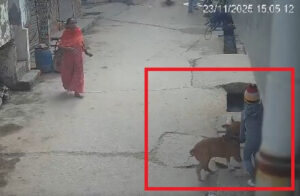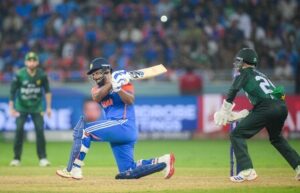Pakistan takes media to Balakot, curtails interactions

Intel Sources: Picture of JeM facility destroyed by Indian Air Force Strikes in Balakot, Pakistan (File Photo by ANI via IANS)
Intel Sources: Picture of JeM facility destroyed by Indian Air Force Strikes in Balakot, Pakistan (Photo as released by ANI via IANS)
New Delhi: Forty-three days after the Indian Air Force struck Jaish-e-Mohammed (JeM) terror training camps in Pakistan’s Balakot, the Pakistani government took representatives of some Islamabad-based international media houses and foreign diplomats to the area but directed them not to “speak too long” to local residents.
The Hindi website of BBC reported that one of its correspondents was also among the team that visited the “air strike site” in Pakistan’s Khyber Pakhtunkhwa province, bombed by the IAF in retaliation for the February 14 Pulwama terror attack in which at least 40 CRPF troopers were killed.
India claimed to have destroyed a camp belonging to the JeM in the air strike, inflicting “a large number of casualties”, a claim that was refuted by Pakistan that said besides some trees which were felled, and a person who sustained injuries, no one was killed.
The Pakistani government had then assured the media that they would be taken to the place where India claimed to have conducted “surgical strikes”. However, the government later backed off from its promise.
The BBC Hindi correspondent who was part of the team mentioned after boarding a helicopter at Islamabad, said they landed at a place near Mansehra. Following that, they passed through some difficult, mountainous terrain for the next one-and-a-half hours.
On their way to the madrassa, which was claimed to have been destroyed by India, the media team was shown three different places. They were told that IAF dropped the payload there, and the correspondent says only a few craters and uprooted trees could be noticed.
The BBC reporter said the place was isolated and away from human habitation.
The team was then taken to the hill top where the madrassa is located. The BBC scribe said that “looking at the structure, it did not look like newly-built, or they suffered any damage in the attack”.
The entire building was still intact, and some of its parts looked quite old, and in the adjacent mosque hall, 150-200 children were studying.
However, when the authorities were asked about the delay in arranging the tour, they cited “the unstable situation made it difficult to take people there”.
The officials said they believed “the time to provide a tour to the media was appropriate now”.
They also denied that a team of a news agency and local journalists were stopped from entering the premises.
When Major General Asif Ghafoor, the Director General of the Inter-Services Public Relations (ISPR), the armed forces’ media wing, was asked about journalists spotting the name of Maulana Yusuf Azhar – the brother-in-law of JeM chief Maulana Masood Azhar – on the madrassa board, he did not give a direct answer. He said they were looking into the funding of the madrassa, and focusing on the courses provided there.
A board in the madrassa read it was closed from February 27- March 14. According to a teacher, the step was taken as an “emergency measure”.
When the media team tried to speak to the local residents, they were told: “Be quick… don’t talk for too long.”
Published on: April 10, 2019 at 20:50 IST
IANS





